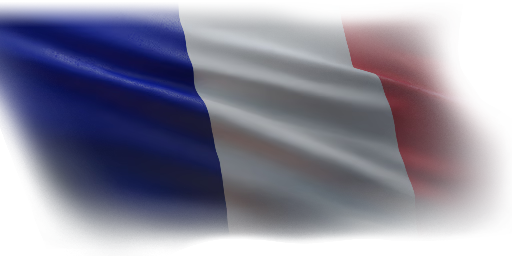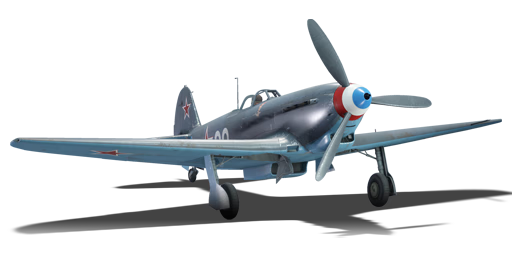


This Yak-9T White 60 was flown by French pilot René M. P. A. Challe, who served in the Normandie-Niemen squadron, a French fighter squadron that fought on the Eastern Front of World War II under Soviet command. During the Battle of France, Challe was part of the GC III/7 and was shot down in his M.S.406, which led to his hospitalization. After recovering, he escaped occupied France in 1943 with eight fellow aviators through Spain and volunteered to join the Normandie-Niemen regiment in Tula, USSR. He was assigned to his Yak-9T White 60, where he painted the emblem of his previous squadron and acquired eight confirmed aerial victories. On his last flight on January 17, 1945, he was gravely injured when Minengeschoß rounds exploded in his cockpit, severely injuring his left hand and arm. Despite his injuries, he survived the engagement, the war, and recovered from his wounds. He passed away on April 4, 2006.
It was introduced in Update 1.73 "Vive la France" and made available briefly for purchase in-game with Golden Eagles during the 2017 "75th anniversary of the Normandie-Niemen" event commemorating the Franco-Soviet squadron. The 37 mm NS-37 cannon of the Yak-9T was a fearsome weapon. However, due to its reload time and ammunition capacity, “spray and pray” firing tactics were not an option. As Challe demonstrated time and again, the best bet was to manoeuvre his fighter as close to the enemy as possible, sometimes within 100 metres, and then engage with the cannon. At this range, the cannon had a better chance of hitting its target, and as demonstrated by Challe, it could remove a wing or disable a pilot with ease. Challe would wait for the target aircraft to manoeuvre in a fashion that would expose enough surface area to reduce the chance of the 37 mm rounds bouncing or deflecting off of the target aircraft. Aside from following Challe’s tactics, the cannon can also be used for its intended role of tank busting, loading AP shells, and diving in on the roofs of tanks bursting through with the relatively high penetration of the cannon, making short work of tanks and excelling as a close air support aircraft.
flaps
flaps
flaps
brake
| Belt | Belt filling | Armor penetration (mm) at a distance: | |||||
|---|---|---|---|---|---|---|---|
| 10 m | 100 m | 500 m | 1000 m | 1500 m | 2000 m | ||
| AP-T/HEI-T | 71 | 68 | 57 | 46 | 37 | 30 | |
| HEI-T | 9 | 8 | 7 | 6 | 5 | 5 | |
| AP-T | 71 | 68 | 57 | 46 | 37 | 30 | |
| Belt | Belt filling | Armor penetration (mm) at a distance: | |||||
|---|---|---|---|---|---|---|---|
| 10 m | 100 m | 500 m | 1000 m | 1500 m | 2000 m | ||
| T/AP/AP/IAI | 32 | 30 | 22 | 15 | 11 | 7 | |
| AP-I/API-T/IAI/IAI | 29 | 27 | 20 | 13 | 9 | 6 | |
| API-T/AP-I/AP-I/IAI | 29 | 27 | 20 | 13 | 9 | 6 | |
| AP-I(c)/AP-I/AP-I/API-T/IAI | 34 | 32 | 24 | 17 | 12 | 8 | |
| API-T | 29 | 27 | 20 | 13 | 9 | 6 | |
| AP-I/AP-I/IAI | 29 | 27 | 20 | 14 | 9 | 6 | |







 2 x (55 / 150 / 280) %
2 x (55 / 150 / 280) % 
 2 x 136 %
2 x 136 % 

Flight performance | |
|---|---|
Survivability |
|---|
Weaponry |
|---|